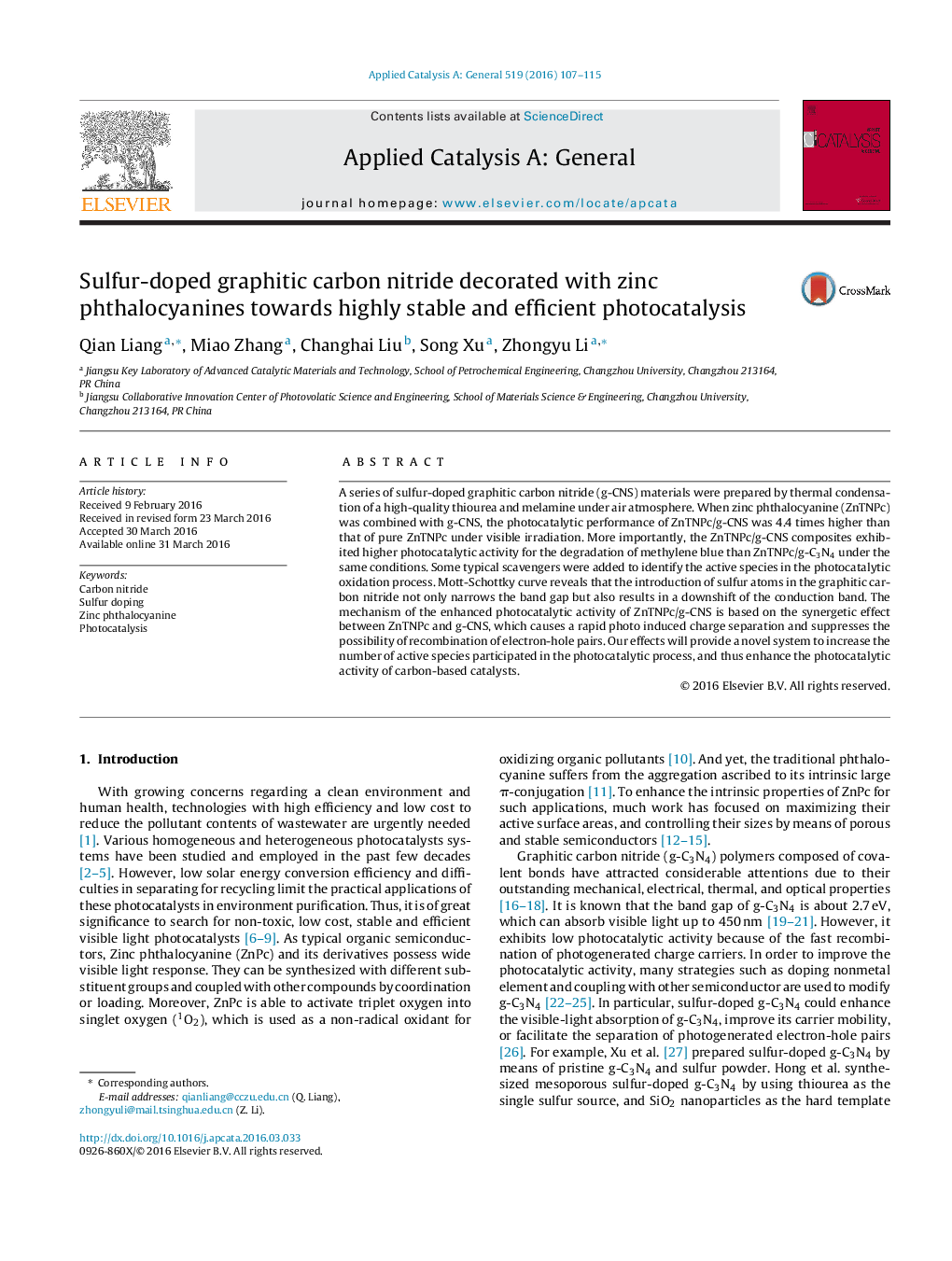| Article ID | Journal | Published Year | Pages | File Type |
|---|---|---|---|---|
| 38903 | Applied Catalysis A: General | 2016 | 9 Pages |
•Porous sulfur-doped g-C3N4 was prepared by a facile precursor-mediated method.•ZnTNPc/sulfur-doped g-C3N4 composites exhibited enhanced photocatalytic activity.•Sulfur-mediated structure was beneficial for separation of electron-hole pairs.
A series of sulfur-doped graphitic carbon nitride (g-CNS) materials were prepared by thermal condensation of a high-quality thiourea and melamine under air atmosphere. When zinc phthalocyanine (ZnTNPc) was combined with g-CNS, the photocatalytic performance of ZnTNPc/g-CNS was 4.4 times higher than that of pure ZnTNPc under visible irradiation. More importantly, the ZnTNPc/g-CNS composites exhibited higher photocatalytic activity for the degradation of methylene blue than ZnTNPc/g-C3N4 under the same conditions. Some typical scavengers were added to identify the active species in the photocatalytic oxidation process. Mott-Schottky curve reveals that the introduction of sulfur atoms in the graphitic carbon nitride not only narrows the band gap but also results in a downshift of the conduction band. The mechanism of the enhanced photocatalytic activity of ZnTNPc/g-CNS is based on the synergetic effect between ZnTNPc and g-CNS, which causes a rapid photo induced charge separation and suppresses the possibility of recombination of electron-hole pairs. Our effects will provide a novel system to increase the number of active species participated in the photocatalytic process, and thus enhance the photocatalytic activity of carbon-based catalysts.
Graphical abstractThe sulfur-doped g-C3N4 (g-CNS) combined with zinc phthalocyanine (ZnTNPc) was prepared and the photocatalytic degradation of methylene blue (MB) was investigated under visible irradiation.Figure optionsDownload full-size imageDownload high-quality image (116 K)Download as PowerPoint slide
